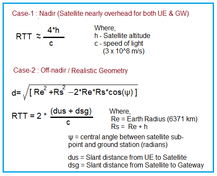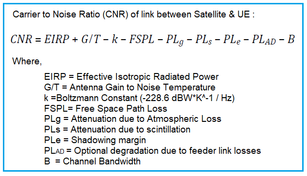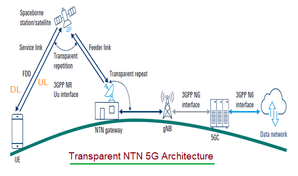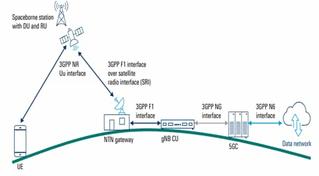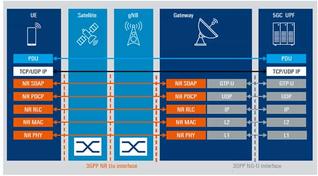ACLR ACS ACIR ACR measurements:Key differences
Advertisement
Introduction: These are critical interference related metrics in 5G Non-Terrestrial Networks (NTN), where high altitude or satellite links make interference management much more challenging due to wide coverage footprints and frequency reuse.
In 5G NTN, maintaining adequate ACLR, ACS, ACIR, and ACR is vital to ensure spectral efficiency, minimize inter-beam interference, and guarantee QoS across wide coverage areas with frequency reuse.
Due to the unique propagation characteristics (long path delays, Doppler, and dynamic geometry) in NTN, these parameters directly influence link budget design, transponder linearity, and UE receiver performance.
ACLR (Adjacent Channel Leakage Ratio)
- Definition : It quantifies how much of a transmitter’s power leaks into adjacent frequency channels.
- Formula : It’s a transmitter side metric expressed using following mathematical equation.
-
It measures spectral purity i.e., how well the transmitter confines its signal within its allocated band.
-
Example Calculation : Pdesired = 43 dBm, Padjacent_channel_leakage = -17 dBm, ACLR = 60 dB
ACS (Adjacent Channel Selectivity)
- Definition : ACS measures how much less sensitive the receiver is to an adjacent channel compared to the wanted one.
- Formula : It is expressed using following mathematical equation at the same BER or BLER criterion.
- It is measure of receiver’s ability to reject adjacent channel interference.
- Typical values of receiver 5G ACS for handheld UEs are in the range from 33 to 45.
- For satellite user terminals ACS can be up to 55 dB.
ACIR (Adjacent Channel Interference Ratio)
- Definition : It quantifies the total adjacent channel interference isolation between a transmitter receiver pair. It combines transmitter ACLR and receiver ACS. ACIR shows the effective interference rejection when both the transmitter leaks and receiver filters are considered.
- Formula : It is expressed using following equation.
- Example calculation : ACLR = 60 dB, ACS = 40 dB, ACIR (dB) = 40 dB
ACR (Adjacent Channel Rejection)
- Definition : It expresses the receiver’s ability to reject an interferer in the adjacent channel, including both adjacent channel selectivity and power offset.
- Formula : It is expressed using following equation when performance just meets specified BLER of 10^-3.
Alternately, it can be expressed as follows.
- Example Calculation : ACS = 40 dB, (C/I)required = 40 +20 = 60 dB
- This means, the receiver must see the adjacent interferer at least 60 dB weaker than its wanted signal to meet performance requirements.
Conclusion: A balanced optimization i.e. high transmitter linearity (ACLR), strong receiver selectivity (ACS), and system level isolation (ACIR, ACR) enables reliable multi-beam coexistence, efficient spectrum use and stable end to end performance across LEO, MEO and GEO satellite layers.
Advertisement
 RF
RF